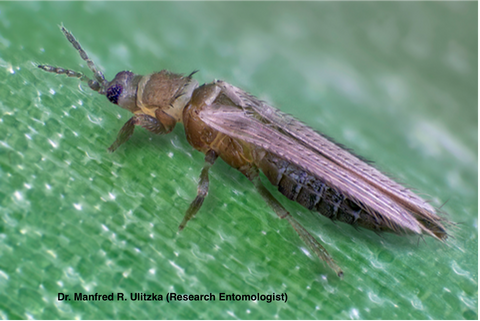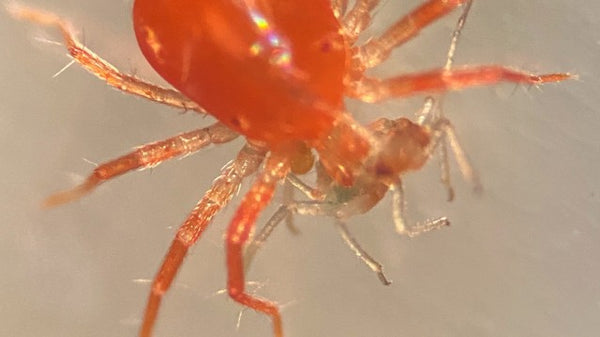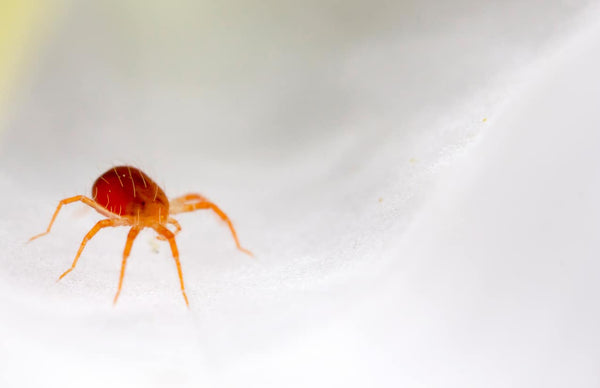Onion Thrips Control
Onion thrips (Thrips tabaci) are small 1/16th of an inch and range from pale yellow to dark brown. Onion thrips are slightly smaller than western flower thrips and lay their eggs in plant tissue. An adult female can lay up to 200 eggs in her lifetime, with 5 to 8 generations a year.
Onion thrips overwinter in legume or grain fields, in weedy areas, and in onion bulbs left in the field. Outbreaks are most likely to occur in the summer when it's hot and dry.
Onions thrips prefer to feed on newly emerged leaves and intensive feeding results in a silvery white stippled appearance. Thrips also feed on pollen and can be found within blossoms. Onion thrips can vector dangerous plant viruses which is another reason for control.
Sound Horticulture offers several options for biological control of thrips. You can use Amblyseius cucumeris in sachets or to sprinkle on foliage. Orius insidiosus is a good generalist predator on flowering plants. For use in the soil or growth media use the predatory mite Stratiolaelaps scimitus and entomopathogenic nematodes. Read more about these predators on our website and talk to us about a thrips control strategy that works for you.


Thrips ID key, Ontario Floriculture
Onion Thrips, Utah State University
Onion Thrips, Penn State Extension
Always obtain an accurate identification of the pest and ensure you are using good cultural and sanitation practices. Local extension offices can hep with pest ID. Additionally, feel free to send us images and we will do our best to assist you.
Remember to review labels prior to purchase to confirm the product you are purchasing is labeled for the specific pest/disease and crop you are treating.





